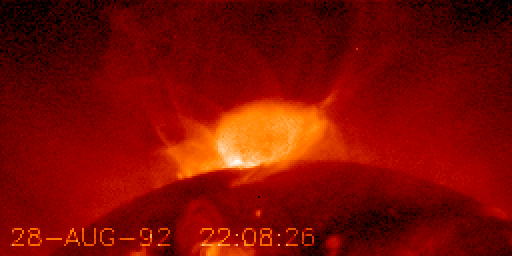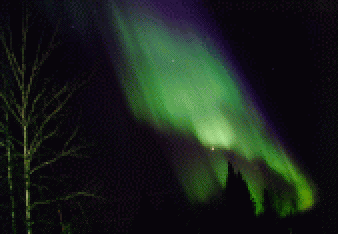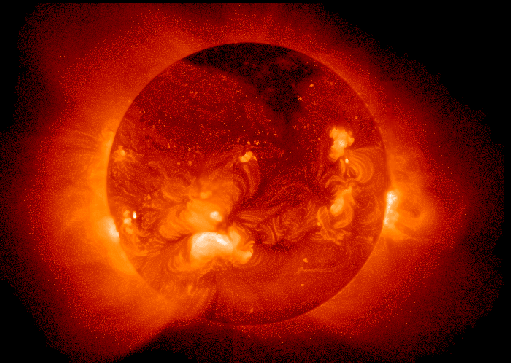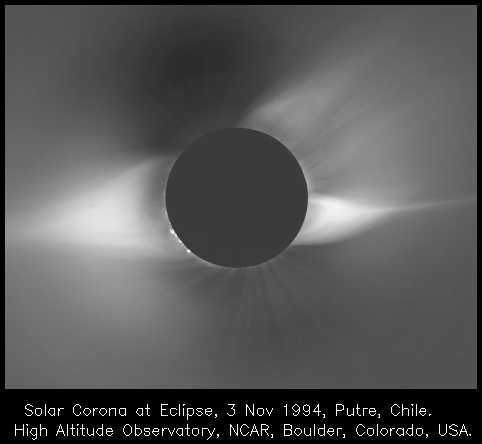
Sometimes the magnetic field emerges from the lower regions and loops back down into the Sun. These magnetic structures can be seen extending up into the corona. As particles follow the path created by the magnetic field they form dynamic loops and arches that are most readily visible with special telescopes. These structures are known as solar prominences. Below is an image of a solar prominence taken by the Soft X-ray Telescope on the Yohkoh satellite currently orbiting the earth.

Particles from the corona also stream out along the magnetic field lines of the Sun that extend into interstellar space. This "solar wind" transports particles through space at 400 kilometers per second. When the solar wind reaches the earth the magnetic field of the earth will sometimes trap these electrons and protons and pull them into the earth's atmosphere. Atoms in the earth's atmosphere interact with these high energy particles by accepting energy from them and then releasing that energy in the form of colored light. This display of light is known as the Aurora Borealis when it occurs in the northern hemisphere.

The corona emits energy of many different wavelengths, from long wavelength radio waves, to short wavelength X-rays. The short wavelength X-rays do not make it through the earth's atmosphere so X-ray images of the corona must be taken above our atmosphere from telescopes in space. Soft X-ray images of the corona are taken by a telescope on the Yohkoh satellite mentioned above. (X-rays come in a wide range of energies. Soft X-rays are at the lower end of the energy range and the term hard X-rays is given to those at the higher end.)
By viewing the Sun with many different instruments, each tuned to a particular wavelength of the Sun's energy, scientists can use their "different eyes" to help look for answers to the many questions that still surround our nearest star.

